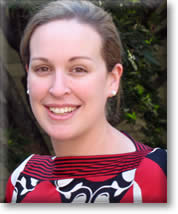Emily B. Askew, Ph.D.

Teaching Associate Professor
office: Brody 7N-47
phone: 252-744-0310
email: askewe@ecu.edu
B.S., University of North Carolina at Chapel Hill
Ph.D., University of North Carolina at Chapel Hill
Postdoctoral Fellow, Brody School of Medicine at East Carolina University
Teaching
I serve as course director and teach in Gross Anatomy and Embryology for first-year medical students, and direct Clinical Gross Human Anatomy—a 2-week, dissection-based elective for fourth-year medical students. Additionally, I serve as a laboratory instructor in Medical Neuroscience, and am an instructor in both Clinical Gross Anatomy (first year physician assistant students) and Health Professions Gross Anatomy (physical therapy and nurse anesthesia students). I coordinate research rotations in Anatomy and Cell Biology for first-year doctoral graduate students and serve as course director for their research rotations course (Research Problems in Cell Biology). I am also the assistant director for the Brody School of Medicine Summer Program for Future Doctors, and serve as course director for the Anatomical Sciences course in that program.
Research
My current research focus is in the area of graduate and medical education, with a primary emphasis on anatomical sciences education as well as the use of learning tools to augment retention of course content in the medical curriculum.
Previously, my research was focused on investigating protein interactions and signaling pathways involving the CD44 cell surface transmembrane type 1 glycoprotein and its interaction with hyaluronan (HA), a critical component of the extracellular matrix. CD44 and HA are found in articular chondrocytes and are involved in the joint cartilage degenerating disease, osteoarthritis.
Selected Publications
Ishizuka, S., S. Tsuchiya, Y. Ohashi, K. Terabe, E.B. Askew, N. Ishizuka, and C.B. Knudson. 2019. Hyaluronan synthase 2 (HAS2) overexpression diminishes the procatabolic activity of chondrocytes by a mechanism independent of extracellular hyaluronan. J. Biol. Chem. [Epub ahead of print]. PMID: 31270213.
Terabe, K., N. Takahashi, M. Cobb, E.B. Askew, C.B. Knudson, and W. Knudson. 2019. Simvastatin promotes restoration of chondrocyte morphology and phenotype. Arch. Biochem. Biophys. 665: 1-11. PMID: 30776329.
Knudson, W., S. Ishizuka, K. Terabe, E.B. Askew, and C.B. Knudson. 2019. The pericellular hyaluronan of articular chondrocytes. Matrix Biol. 78-79: 32-46. PMID: 29425696.
Askew, E.B., S. Bai, A.B. Parris, J.T. Minges, and E.M. Wilson. 2017. Androgen receptor regulation by histone methyltransferase suppressor of variegation 3-9 homolog 2 and melanoma antigen-A11. Mol. Cell Endocrinol. 443: 42-51.
Yuang, Y., E.B. Askew, C.B. Knudson, and W. Knudson. 2016. CRISPR/Cas9 knockout of HAS2 in rat chondrosarcoma chondrocytes demonstrates the requirement of hyaluronan for aggrecan retention. Matrix Biol. 56: 74-94.
Ishizuka, S., E.B. Askew, N. Ishizuka, C.B. Knudson, and W. Knudson. 2016. 4-methyl-umbelliferone diminishes catabolically-activated articular chondrocytes and cartilage explants via a mechanism independent of hyaluronan inhibition. J. Biol. Chem. 291: 12087-12104.
Luo N., W. Knudson, E.B. Askew, R.M. Veluci, and C.B. Knudson. 2014. CD44 and hyaluronan promote the bone morphogenetic protein 7 signaling response in murine chondrocytes. Arthritis Rheum. 66:1547-1558.
Mellor, L., C.B. Knudson, D. Hida, E.B. Askew, and W. Knudson. 2013. Intracellular domain fragment of CD44 alters CD44 function in chondrocytes. J. Biol. Chem. 288: 25838-25850.
Askew, E.B., J.T. Minges, A.T. Hnat, and E.M. Wilson. 2012. Structural features discriminate androgen receptor N/C terminal and coactivator interactions. Mol. Cell Endocrinol. 348: 403-410.
Askew, E.B., S. Bai, A.J. Blackwelder, and E.M. Wilson. 2010. Transcriptional synergy between melanoma antigen protein-A11 (MAGE-11) and p300 in androgen receptor signaling. J. Biol. Chem. 285: 21824-21836.
Askew, E.B., S. Bai, A.T. Hnat, J.T. Minges, and E.M. Wilson. 2009. MAGE-11 F-box links the androgen receptor NH2-terminal transactivation domain to p160 coactivators. J. Biol. Chem. 284: 34793-34808.
Askew, E.B., R.T. Gampe, Jr., T.B. Stanley, J.L. Faggart, and E.M. Wilson. 2007. Modulation of androgen receptor activation function 2 by testosterone and dihydrotestosterone. J. Biol. Chem. 282: 25801-25816.